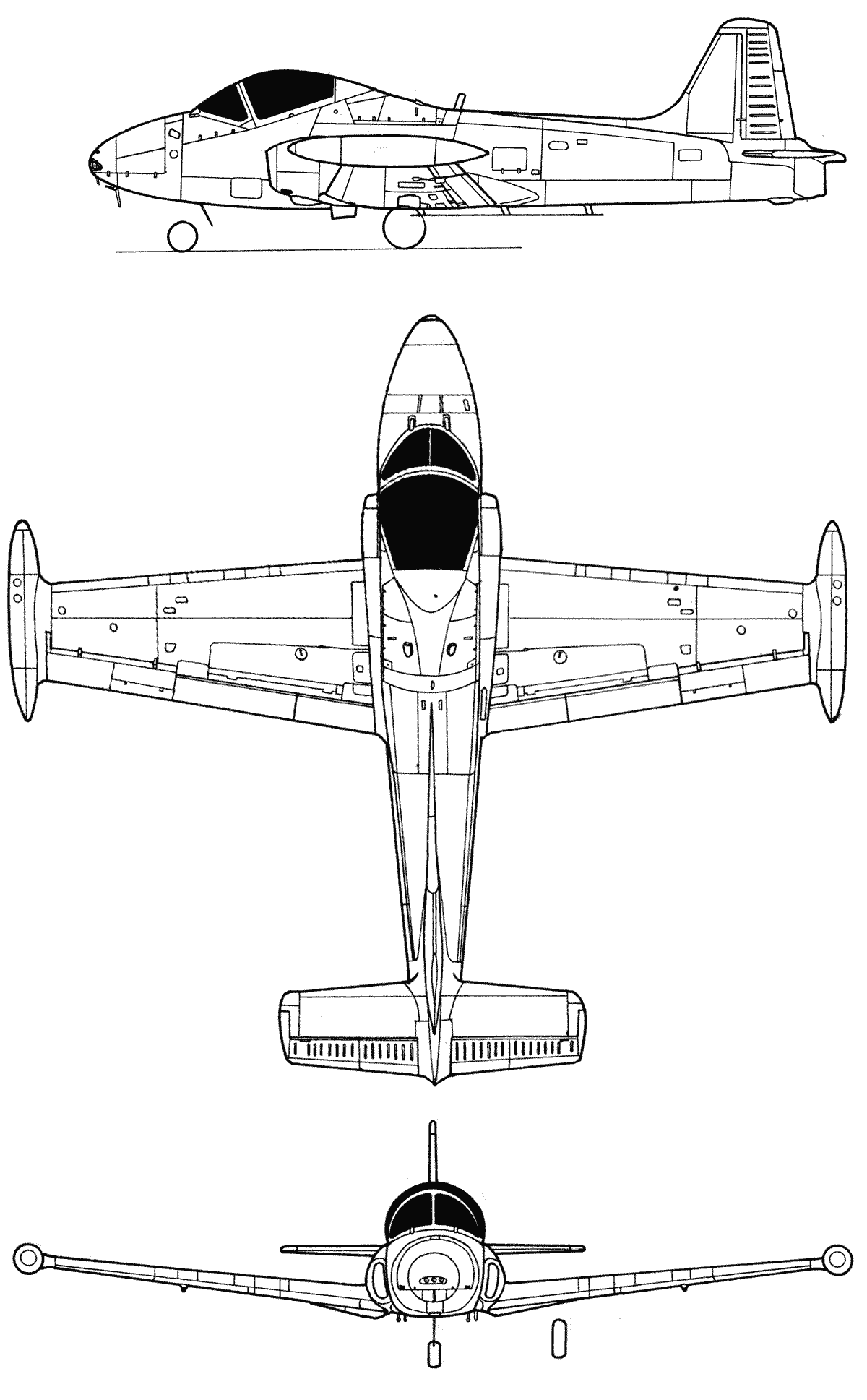- Yes
- No
- 6.7
- 7.0
- 7.3
- 7.7
- Other
- Voted No
- United Kingdom
- United States
- A Canadian Tree/Sub-Tree
- Other
- Voted No
Hello everyone! I Today I will be suggesting the CL-41G, a COIN/CAS version of the venerable CT-114 Tutor trainer jet.

History:
Beginning in 1963, Canadair began marketing an armed trainer, counter-insurgency, and light close air support variant of their CL-41 jet trainer. The CL-41 was a low wing, T-tail, side-by-side, single engine jet trainer. The powerplant came in the form of a single Orenda J85-CAN-40 turbojet producing 2,700 lbf (12 kN) of thrust. In June 1964, a prototype was created by converting the CL-41A 26015. The conversion included a reflector gun sight, gun camera, strengthened landing gear, low pressure tires, as well as six hardpoints, two under the fuselage and four under the pair of wings. The aircraft took off in this configuration for the first time on June 9th, 1964 with pilot Ian MacTavish at the controls. Weapon trials were conducted throughout 1964 with bombs and gunpod trials conducted at RCAF Station Chatham, and Eglin AFB respectively. These were followed by an extensive weapons trials at NOTS Inyokern & NAS Patuxent River flown by USN aviators. During it’s gunpod trials, the aircraft mounted with SUU-11/A proved to be an exceptionally stable firing platform, the aircraft fired a total of 49,000 rounds of ammunition with repeated consistency. In 1965 the aircraft flew down to Quito, Ecuador for a series of demonstration flights, however these yielded no sale. Other failed foreign sales included Iran, Kuwait, Philippines, and Australia. A unique proposal for the Royal Australian Air Force saw the CL-41G equipped with wingtip tanks; this would’ve been designated the CL-41G-4. The CL-41G’s first and only sale came in March 1966 with the sale of 20 CL-41G-5’s to the Royal Malaysian Air Force. The CL-41G-5’s differed from the CL-41G in a few different ways, including a new more powerful engine, but perhaps that is a story for another time… A purpose built twin engine ground-attack variant of the CL-41 was later proposed as the CL-41T. The CL-41T featured two more weapon pylons, terrain following radar, and guided weapon capabilities, this never proceeded past the blueprint stage. The CL-41G prototype remained in Canada, eventually serving alongside the CL-84-1 as a chase aircraft. The aircraft was struck off the Canadian Forces inventory in January 1991, and currently resides as an outdoor display at the National Air Force Museum of Canada.


In-Game:
The CL-41G provides a Canadian attacker jet option to War Thunder, much in the same light as the Sk 60’s found in the Swedish tree. The CL-41G could easily be implemented in the British, or American trees or could be a part of a unique Canadian branch/tree of aircraft in-game.

Specifications:
General characteristics :
Crew: 2
Length: 32 ft (9.8 m)
Wingspan: 36 ft 4 in (11.1 m)
Height: 9 ft 5 in (2.86 m)
Empty weight: 4,860 lb (2,205 kg)
Max takeoff weight: 7,437 lb (3,373 kg)
Powerplant: 1 × Orenda J85-CAN-40 turbojet engine producing 2,700 lbf (12 kN) of thrust.
Performance:
Maximum speed: 791 km/h (491 mph) at 4,572 m (15,000 ft)
Range: 1445 km (898 mi)
Service ceiling: 13,716 m (45,000 ft)
Rate of climb: 21.6 m/s (4,250 ft/min)
Armament:
2x 7.62 mm SUU-11/A gunpods with 3000 rounds total
6x 250 lb Mk.81/Snake eye bombs
4x 500 lb Mk.82/Snake eye bombs
2x 1000 lb Mk.83 bombs
2x 500 lb BLU-11 /B napalm bombs
2x 750 lb BLU-1/B napalm bombs
2x 500 lb Mk.20 cluster bombs
52x 70mm Mighty Mouse rockets
8x 127mm Zuni rockets

Sources:
Canadair CT-114 Tutor - Wikipedia
E0 05-195A-1 CANADIAN FORCES, AIRCRAFT OPERATING INSTRUCTIONS TUTOR, 1973
Canadair’s Tutor-Emeritus Part 6: The Ground Attack CL-41s
Canadair’s Tutor-Emeritus Addendum 2: CL-41 Models & Proposed Variants

